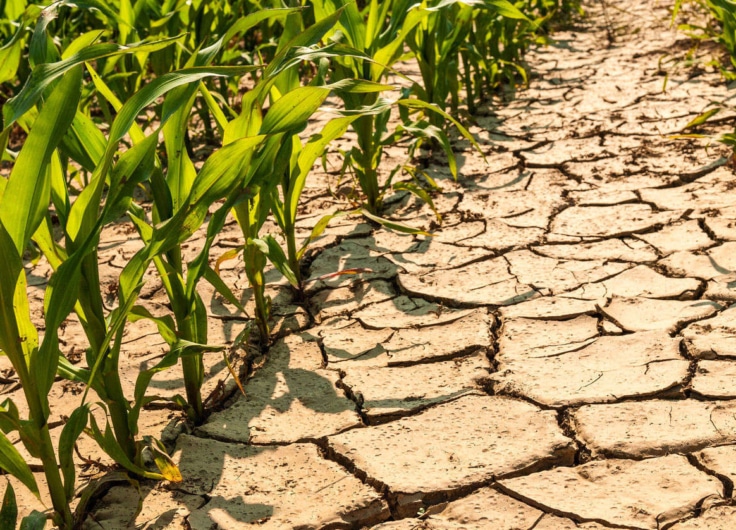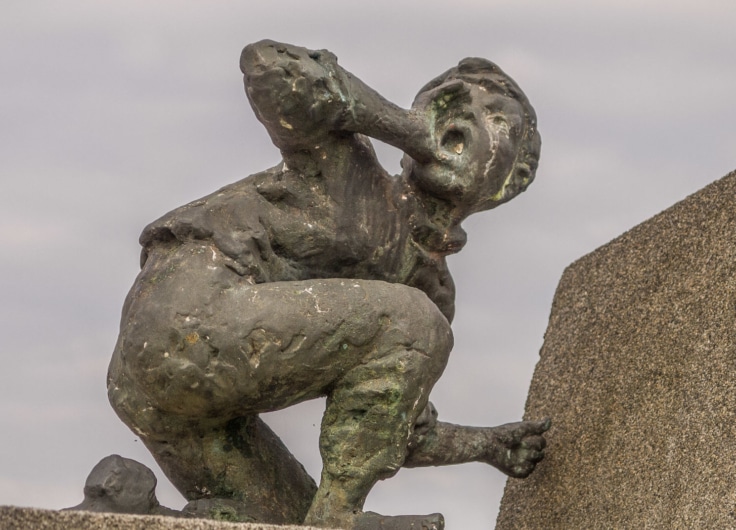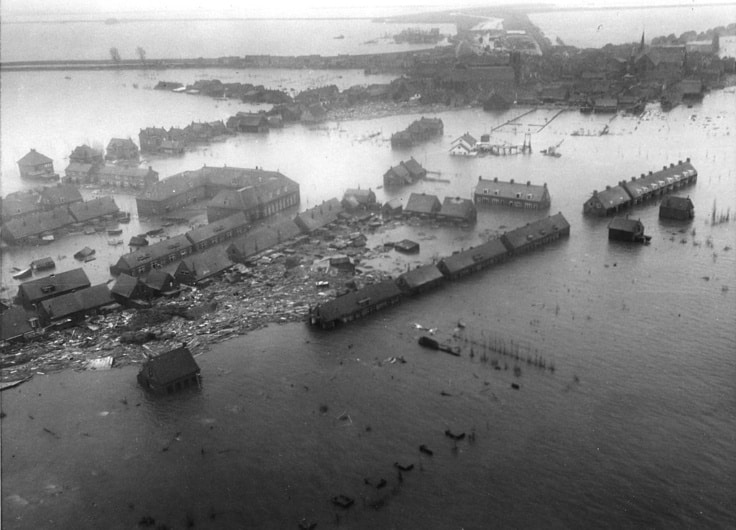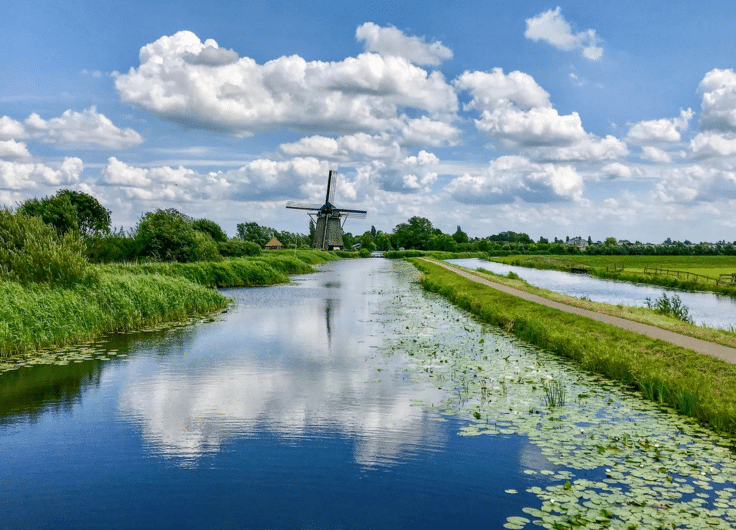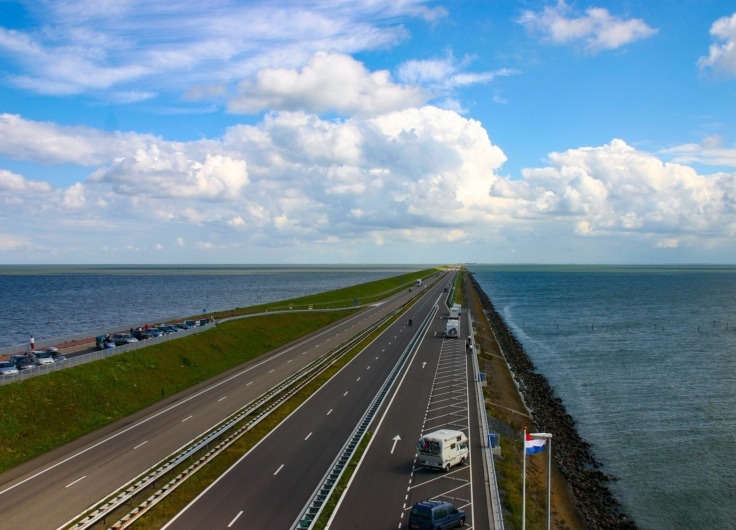Texel is at the forefront of climate change: by 2050, the Wadden Island will be one of the driest places in the Netherlands. Local farmers are now combining ancient knowledge with innovative techniques to retain freshwater and prevent soil salinisation. “Nature and agriculture may not always match, but here everything comes together.”
It is the summer of 2022. The Netherlands is suffering from extreme heat. This century has not been this dry before. Photos of the heatwave appear in the media, mostly of traffic jams to overcrowded beaches. An intriguing image catches my attention: an aerial photo titled “Texel water lake turns flamingo pink”.
I want to know more about this. I remember the strong wind at Texel: during a walk on the northernmost beach, near the lighthouse, the weather suddenly changed. We had to take shelter from the rising storm. Islanders live with that turbulence; they have learned to adapt to the elements. Especially with a northwest wind, which can be quite fierce, I was told.
In 2022, the lake in the news photo had already turned pink for the third time. Researchers discovered that the discolouration was the work of algae (related to the single-celled sea sparkle that can light up the waves). The pink phenomenon only occurs when the water is very salty and low in oxygen, as is the case on Texel, due to drought and heat. The news report ended with the reassuring words that the algae are not dangerous for humans and animals. But, as the forest ranger at the nature reserve said: “The only thing is that it may happen more often as it gets warmer and drier.” The photogenic lake has, thus, also become a warning sign.
Saltier than the North Sea
“In 2018, the Wadden Sea was saltier than the North Sea for the first time,” according to Katja Philippart, Professor of Marine Ecology and Director of the Wadden Academy. Her workplace at the Netherlands Institute for Sea Research (NIOZ) is just behind the sea dike on Texel. These are the first buildings you see when you arrive on the island. “There is an increasing demand for freshwater,” she says. “But retaining water from the rivers means the inflow to the Wadden Sea is limited, and that affects species diversity in the delta. For example, there is a mussel bed somewhere between Kornwerderzand and Den Oever. The mussels are so abundant there because they are not eaten by starfish that now choose the saltier water further away.”
Increasing drought and heat make Texel especially vulnerable to salinisation
The amount of water that rivers discharge into the Wadden Sea (managed by the Netherlands, Germany and Denmark) has been steadily declining for years. We are now at a 30 percent reduction compared to the year 2000. Philippart is researching the changes in marine life due to increased salinity. “We don’t know everything yet, but we do know that salinisation is affecting everything that lives in our coastal waters. We need solutions to our need for freshwater,” she says. “But that can’t be done with our backs to the sea.”
Increasing drought and heat make Texel especially vulnerable to salinisation. Saltwater is heavier than freshwater. As a result, the rising sea level pushes freshwater further inland. This freshwater forms a bubble that is pushed up to the surface, where it increasingly evaporates due to the rising heat. If too little surface water remains, the landscape becomes saline. Then plants end up with their roots in the salt, which has dire consequences.
 Texel's northernmost beach during a hot summer
Texel's northernmost beach during a hot summer© Judith Ploegman
Living between sweet and salt
Wagejot, the pink lake, lies on the east side of Texel, behind a dike that was reinforced in 1977. A year earlier, a strong storm threatened to evacuate this part of the island. The water remained just below the crest of the dike. With the 1953 flood disaster still in their minds (six men died and a hundred and twenty meters of dike gave way), the Texelaars demanded action. They took their sheep to the Binnenhof and with the credo “No corpses, raise the dikes!” they demanded reinforcement. A year later, all of Texel’s dikes had been raised to 7.56 meters above the Amsterdam Ordnance Datum (NAP). The dike was laid seawards, creating the little lake, a brackish water reserve where salty seawater and fresh rainwater mix.
Such a dike fascinates. It is the boundary between land and water, between fresh and salt. A dike is so much more than a flood barrier: it has character. An inviting character: if you walk up the sloping paths or the steep stairs, all the space of the surrounding sea reveals itself at the highest point. Without the protection of the dike, you stand in the full wind. It takes hefty storms to see the other side of that character: at those moments the dikes show themselves unwavering as protectors of the land.
 Sheep graze the dikes on Texel.
Sheep graze the dikes on Texel.© Judith Ploegman
On Texel, sheep graze the dikes. Sometimes they are behind fences, sometimes you have to get off your bike because on hot days they seek the shade of the dike, blocking the path. “Sheep have golden feet,” says Henk van der Star. He is a sheep farmer; his farm is called De Oorsprong (The Origin). “Cows destroy everything. That’s why there are sheep on the dike.” The small, cloven hooves level the ground. They level bumps and uneven areas and eat the weeds out of the vegetation. This is important, Van der Star explains, because if the grass is good, the water cannot get a grip on the dike. But nowadays the grass starts growing earlier and earlier due to the changing climate, he says. The sheep now have to go up the dike as early as April. That’s much earlier than 15 years ago.
Sheep farmer Henk van der Star: “Sheep level bumps and uneven areas and eat the weeds out of the vegetation.” Important, because if the grass is good, the water cannot get a grip on the dike
The temperature changes and increasing drought are not of a passing nature. Texel will be one of the driest places in the Netherlands by 2050, according to predictions by the Royal Netherlands Meteorological Institute (KNMI) and other environmental data. The island has a unique nature: there are deciduous and pine forests, and there are large dune areas such as the Bleekersvallei and De Muy, with transitions between fresh and salt that require vegetation to maintain their natural, protective function. The dunes provide protection against the rising sea level. There are wetlands, salt marshes, mudflats and special agricultural landscapes such as the saline grasslands on Zuid and the fields on Eierland.
Counteracting salinisation
Arnold Langeveld is the owner of some of those Eierland fields. His company is called Nieuw Breda. On the land, there are two large white tanks full of water, six wells and a technical room. “We were looking for a solution to the drought,” he explains. “In 2011 we started on the back of a beer mat, so to speak, and now we have a working system.” On that beer mat, Langeveld worked out some ideas for storing water during that very dry year, along with an employee of the water authority.
No surface water may be used on the island of Texel for irrigating land. This measure should prevent drought and salinisation, but poses major challenges for agriculture. “Every winter 44 million cubic meters of freshwater is pumped over the dike. We wondered if there were ways to store that water. We then came up with seven ways to use freshwater more efficiently. The choice fell on underground water storage. In parallel, the freshwater weir was developed to separate fresh and saltwater. That weir ensures that saltwater returns to the sea and freshwater remains on the island.”
Everstekoog's smart weirs ensure that every part of the island gets the water it needs
Langeveld is talking about Everstekoog, the innovative wastewater treatment plant of Water Authority Hollands Noorderkwartier, where he is on the general board. It is an ingenious system of water compartments that reuses the treated water as efficiently as possible. The smart weirs ensure that each part of the island gets the water it needs. Work has recently begun on a redesign that will allow fresh weirs to hold fresh water while discharging salt water. Floating solar panels on the installation at Everstekoog reduce water evaporation and generate energy: a great example of multiple use of space. The energy powers the public lighting.
“Nature and agriculture may not always match,” Langeveld says. “But with Texel Water, the platform we established at the time, everything came together.” Texel Water is a broad coalition of social partners, the agricultural sector, nature managers, the province of North Holland, the water authority and the municipality of Texel.
 The installation in Arnold Langeveld's field
The installation in Arnold Langeveld's field© Judith Ploegman
Langeveld does not like hard opposition. That’s why he is a farmer, water board administrator, active in politics and chairman of the Texel branch of the agricultural organisation LTO. “We must learn to listen to each other and be careful that it doesn’t become a one-way conversation. We, farmers, are used to dealing with drought and being frugal with our land and habitat. We need to come up with big solutions to big problems together. We benefit from the availability of freshwater and the natural areas benefit from the solutions we can come up with.”
Fresh future
The system on Langeveld’s land may be one such solution. A number of farmers united under the name Sweet Future Texel, developed a way to store water underground, purify it and then return the purified water to the groundwater level below the fields via an ingenious drainage system. The farmers did this together with Acacia Water, a consultancy firm that finds sustainable solutions to water issues.
Langeveld: “In Breezand, on the mainland, we experimented with vertical drilling to store water. But soil consists of layers: a layer of clay, a layer of sand and another layer of clay. By experimenting, we discovered that we needed to drill vertically, so we could store a freshwater bubble between the clay layers in the sand layer. Eventually, we found enough resources to build this system.” It was not easy. “In the idea phase, it’s all great. But when you have to go into the bureaucratic world with a good idea, it’s like walking with an elastic band around your legs,” Langeveld laughs. “It has rubbed off considerably. I am hopeful that our innovation will now shine.”
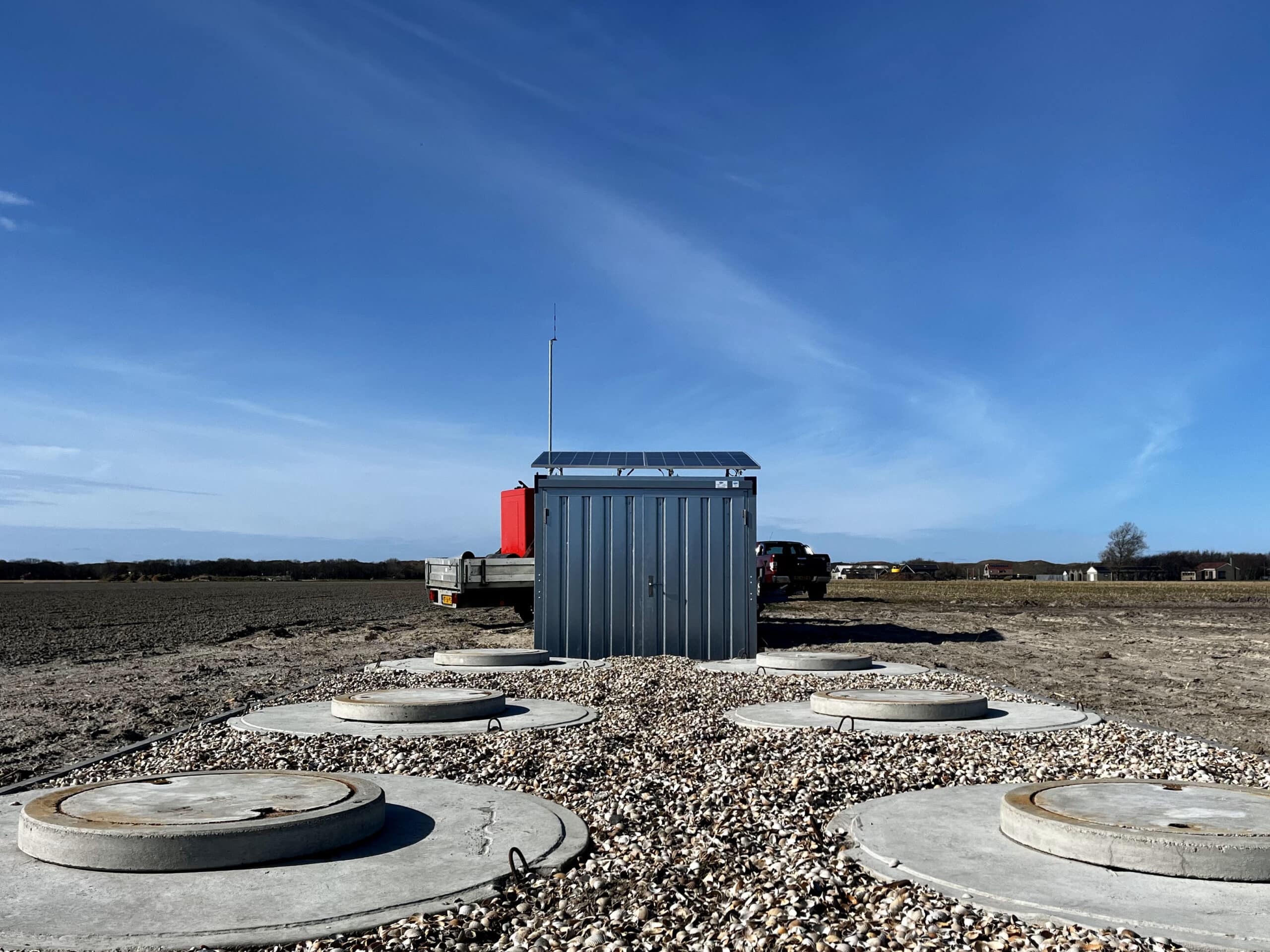 Underground water storage on farmer Arnold Langeveld's fields
Underground water storage on farmer Arnold Langeveld's fields© Judith Ploegman
Katja Philippart from the Wadden Academy is enthusiastic about the efforts of Fresh Future. “I agree with it very much. Texel’s contribution to the supply of freshwater to the Wadden Sea is limited. But capturing and using it can make a lot of difference for the vulnerable island. Sea level rise benefits from counterpressure. That is what happens when groundwater levels are raised and further salinisation is prevented. “However, it is an issue of scale,” she says. “If this is applied to large areas, it does have consequences for the richness of our coastal areas.”
Farmer Arnold Langeveld hopes that the irrigation system could also help nature reserves in the future
Returning for a moment to bridging contradictions, such as those between farmers and nature: “If we continue this development and let time do its work, things will work out,” Langeveld believes. Just as sea level rise, salinisation, drought and extreme heat all reinforce each other, raising groundwater levels, preventing salinisation and effectively managing the natural vegetation of dikes, dunes and nature reserves can also have an effect that is much bigger than just watering land. He, therefore, hopes that the irrigation system will be able to help nature reserves in the future.
“No man is an island entire of itself; every man is a piece of the continent, a part of the main”, wrote John Donne in his famous poem For Whom the Bell Tolls. This small island in the Wadden Sea teaches us the same: by cleverly connecting old customs with innovations and scientific knowledge, it has become possible to protect a vulnerable area from climate threats. And we need to listen to each other, as Langeveld argues: take the initiative, build coalitions with parties that have similar interests and get to work together.


